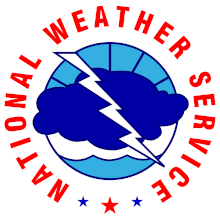Late September marks the tilt back towards winter. Already, the uppermost ramparts of Mount Shasta have received their first snowfall. Though it's only a few inches, it's enough to create loose and slick surfaces and disguise unstable footing. The combined factors can lead to a slip and fall. While autumn weather is notorious for being clear and fair, it can also host real winter-like conditions: freezing temperatures, strong winds, and precipitation in the form of both rain and snow. If you are planning to climb and want to avoid an accident, look for a clear weather window, move with caution, know your ability and keep an eye on the clock as the days are growing shorter.
While day hikes on the lower half of the mountain are still fair game, the upper mountain is rockfall-prone and makes for an arduous climb. If you want the classic, white, pristine spring climb of Mount Shasta, wait until next season because right now it's a rocky, loose mess. Again, the lower half of the mountain still offers gorgeous hikes and views, so there is always something to do.
For late season climbing, the Clear Creek route is the go-to. It's a low-angle route and essentially a long hiking slog up the mountain. This will satisfy most climbers wanting to summit this time of year. Given a small amount of recent snow up high (primarily above 13,000 feet), there's a chance climbers may face snow travel. This will most likely be on the Summit Plateau and Summit Panicle. We don't often recommend micro-spikes, however, this is a situation where they could truly shine! Crampons and ice axes are overkill. More importantly, a solid pair of boots and trekking poles, with intentional footwork and route choice, is the best way to steer clear of mishaps. A helmet is optional. The short headwall above Mushroom Rock is the only place rockfall is possible.
For climbers looking for something more technical, any of the glacier routes are an option, but require a higher standard of knowledge, skill and ability. Currently, all routes on Mount Shasta, except Clear Creek, are subject to rockfall, weak snow bridges over crevasses, widening bergschrunds and icy patches. A slip and fall on a snowfield that terminates into a boulder field is a recipe for end of life. Be careful. Remember, there are moments in mountaineering when one must not fall.
Always check the weather before you climb. It's getting to be that time of year when thunder and lightning storms are possible. Being on a 14,179 foot mountain in an electrical storm is scary, not fun and dangerous.
All wilderness trailheads are open and vehicle accessible. Don't forget your REQUIRED ITEMS to climb: summit pass ($25), wilderness permit and human waste packout bag. They are available for self-issue, day or night, at trailheads or the Mt. Shasta and McCloud Ranger Stations. There is now an electronic fee machine available at Bunny Flat. Credit sales are available for 3-day or annual passes. KEEP THE RECEIPT WITH YOU.
Please note that updates of this climbing advisory and route observations will become less frequent as we move into the later part of the summer. As always,, feel free to give us a call to help plan your Mount Shasta adventure. There is something for everyone!
Be Prepared
Our goal is to ensure you have a positive wilderness experience and come home in one piece. To do so:
- BE PREPARED
- DO YOUR RESEARCH
- ALWAYS WEAR A HELMET
- KNOW HOW TO USE YOUR ICE AXE & CRAMPONS.
- CARRY PROPER NAVIGATION TOOLS AND KNOW HOW TO USE THEM
- REMEMBER, YOU ARE RESPONSIBLE FOR YOUR OWN SAFETY.
Accidents and Hazards
Many incidents occur on the mountain every season. The most common accidents include rockfall injuries, lost climbers, and slips and falls in steep terrain. Most accidents can be prevented with proper planning and preparation.
- Do not climb into a whiteout. Always carry a map and compass and/or GPS device and route plan ahead of time.
- Keep your group together. If you split up, have a solid plan and make sure everyone has proper equipment and knows the way.
- Do not glissade with crampons on. If you choose to glissade, take OFF your crampons and make sure the snow is soft.
- Know how to self-arrest properly with your ice axe. A slip and fall on the upper mountain can be fatal.
- Wear a helmet and watch out for rockfall. Climbers get hit every year.
With the right knowledge, skill, equipment, and decision-making, these accidents can be easily prevented. Please, wear a helmet, and know how to use your ice axe and crampons any time of the year.
There is always the potential for thunderstorms during the summer months to shroud the mountain in clouds, limiting visibility. Climbers becoming disoriented on the upper mountain in whiteout conditions and subsequently descending the wrong route is not uncommon. These kinds of scenarios have resulted in many searches over the years. It should go without saying, but we will say it as a solid reminder: Check the weather before you go, and continue to monitor the weather as you climb. DO NOT CLIMB INTO A WHITEOUT! Being caught on the mountain in any type of weather can compromise life and limb.
Understand that if something goes wrong or a member of your climbing party gets injured, you need to be prepared to self-rescue. If you have an emergency on the mountain, call 911. Be prepared to provide your location and the nature of the injury.
Many hazards exist in mountain terrain. Some of these include:
- Ice and rockfall
- Altitude
- Extreme weather
- Avalanches
Icefall and rockfall are possible year-round. It's a simple equation: as snow melts, rockfall increases. If rime ice is plastered to exposed rocks above, it will eventually flake off and fall onto climbers. Wear a helmet and keep your eyes upslope as you climb. Pay attention to other climbers: rockfall is often caused by climbers resting in melted out areas and accidentally dislodging rocks onto slopes and climbers below. Be careful not to kick rocks down onto others.
At the height of 14,179 feet, Mount Shasta is a high altitude peak. It is common for climbers to experience acute mountain sickness (AMS) with signs and symptoms of nausea, headache, and lightheadedness. Despite being a common condition, AMS should not be taken lightly. It can quickly develop into a much more serious and potentially deadly pulmonary or cerebral edema. Rest and hydration are vital to alleviating AMS symptoms. If these symptoms do not improve, your only choice is to descend!
Mt Shasta is a 14, 179-foot volcano with steep slopes, avalanches, glaciers, rockfall, altitude, and extreme weather. Some may feel like Mt Shasta is "safe" due to its proximity to Interstate 5 and its "easy" climbing objective connotation. This is false. One should still expect cold, winter-like conditions at any time of year. Have the appropriate gear AND skill level. Mountaineering is dangerous, and climbers must constantly evaluate the terrain, weather, and many other factors to have a safe trip. One should also not expect immediate rescue. Many factors can prolong rescues. Thus, it is necessary, no matter what mountain of the world, that you be prepared.
Mountain Weather
Check the WEATHER FORECAST before coming up onto Mt. Shasta! Our site's main menu hosts numerous resources on the weather. Researching the mountain weather should be an important part of your trip planning.
Clouds and Precipitation: While you may encounter fair weather at lower elevations, cloud caps can form up high. Never climb into a whiteout, as many climbers have become lost or died in similar conditions. Many routes from all aspects of Mt. Shasta converge on the upper mountain (>12,500 feet). During limited visibility conditions, climbers have descended the wrong side of the mountain. Keep an eye on the sky as you climb, turning around if clouds begin to build on or near the mountain.
Lightning: Mt. Shasta is a 14,000-foot lightning rod and is frequently hit by lightning (usually in summer and fall months), so don't push your luck with building thunderheads.
Wind: Winds can reach over 100 mph at tree line (8,000 ft) and much higher in the alpine region. Winds of 40 mph can knock you off balance. Winds of 60-70 mph can force you to crawl. Hurricane strength winds (>74 mph) can make it nearly impossible to stand and will destroy well-anchored tents. The strongest winds occur with big pressure and temperature gradients in the atmosphere and tend to occur in front of and behind storms. The lowest winds occur when the center of high pressure is over the Mt Shasta area. Take this seriously as the wind has resulted in searches, injuries, and fatalities.
Tips & Notes
Climb early and descend early. This limits exposure to inclement weather (afternoon buildup of clouds is common), allows plenty of time to descend before dark and allows a rescue effort to ensue before dark if one gets injured or lost.
Get an alpine start (2-5 am) and have a turnaround time of 12 to 1 pm. Proper equipment, clothing, and training are a must. Helmets are always recommended and expect rock and ice to fall at any time.
Bring extra warm gear (like a down jacket, balaclava, and extra gloves) in all seasons as climbers often develop superficial frostbite during strong winds. The wind chill temperature near the summit in winter and spring can be well below zero.
Anchor your tent well wherever you camp. Tents can and do blow away frequently. Do not plan to camp above treeline if you do not have anchor lines for your tent.
Solo climbing is not recommended. Traveling with an experienced group is a good idea, and remember - do not split up the group!
The routes on the north and east sides are not recommended for unguided novices; glacier travel and route finding skills are prerequisites.
Mountain Rescue
Do not expect to be rescued. Rather, prevent rescues from happening in the first place, and be prepared to handle rescues within your climbing party should something happen. Nature sets its own terms, and YOU must judge how much risk you are willing to accept.
When to Climb
The BEST time to climb Mt. Shasta is usually from May to mid-July on the south and west sides of the mountain when summer days are longer and the weather is generally stable. However, in dry years, the thin snowpack creates the best climbing conditions in April, May and early June. When the snow melts, you are left with 7,000 feet of scree, talus, and boulders. In heavy snow years, the climbing season extends to August or September. There is NO trail to the summit. Climbing is much safer and more fun on consolidated snow.
A winter climb of Mt. Shasta is possible. Still, it is more difficult and dangerous: extreme weather, short days, avalanches, falling ice and potential post-holing increase the difficulty and danger on all routes. If you choose to travel in the backcountry during the winter and spring, you need to have the proper equipment and training to stay safe. An avalanche beacon, shovel, probe, with the ability to identify avalanche terrain and snow instability, is essential. A climb of Shasta should not be taken lightly.
Every year, many climbers become lost, injured, or killed while attempting Mt. Shasta. Many of these accidents could have been prevented with a bit of pre-planning and training. YOU need to come prepared.
What to Bring
- MANDATORY: wilderness permit, summit pass, human waste pack-out bags. Available for self-issue at all open trailheads.
- THE TEN ESSENTIALS: map and compass, sunglasses and sunscreen, extra food and water, extra clothing, headlamp/flashlight, first aid kit, matches/lighter, stove, knife/multi-tool, bivouac sack.
- HELMET, ICE-AXE, & CRAMPONS
- AVALANCHE BEACON, AVALANCHE PROBE, SHOVEL
Wilderness permits, summit passes, and pack-out bags are currently available at Bunny Flat, the Mt. Shasta and McCloud Ranger Stations and The Fifth Season outdoor store in Mount Shasta City. The Mount Shasta and McCloud Ranger Stations are typically open Monday through Friday from 8 to 4:30 PM. Check our climbing regulations for more details.
Winter and Spring months usually see periods of heightened avalanche danger, though this danger could exist in the summer months under the right circumstances. Research the weather and avalanche danger while planning your trip. Have your climbing party bring avalanche beacons, probes, and shovels armed with proficient skills in their use. Know how to identify avalanche terrain and evaluate snowpack stability.
Shasta Alpine Hut
The stone cabin at treeline on the Avalanche Gulch climbing route is open year-round and all are welcome. However, one cannot sleep inside the cabin, except in emergencies. The composting toilet is open for the season and drinking water is available at the spring. Caretakers are present five days a week for the climbing/hiking season. If you plan on camping, there are two dozen dispersed sites on the property, a nominal $3/bivy and $5/tent fee is asked. There is a fee deposit tube inside the cabin. This fragile area gets a lot of use. Please practice Leave-No-Trace principles. Lastly, the property owner, the Sierra Club Foundation, manages its property under the Mt. Shasta Wilderness rules – dogs, horses, and other domestic animals are not allowed. No drones. Thanks!
Dogs
DOGS, AND OTHER DOMESTIC ANIMALS, ARE NOT ALLOWED IN THE MT. SHASTA WILDERNESS OR WITHIN THE SIERRA CLUB FOUNDATION PRIVATE PROPERTY (Shasta Alpine Hut).
For the latest weather forecast, click HERE! All trailheads are currently accessible by vehicle and stocked with summit passes, wilderness permits and human waste packout bags. Known water sources include Horse Camp, Clear Creek springs and at the 9,800 foot camp on the north side, Hotlum/Bolam route. As more snow melts, other areas will allow water access. Drink at your own risk. Otherwise, plan on melting snow; bring extra fuel for this! Water is not available at Bunny Flat.
Typically, late April, May and June are best. In July, the mountain really begins to unravel. August and beyond is a downhill slide toward poor conditions. Please plan and prepare properly if you choose to climb. Despite being 15 minutes off I-5, one must not underestimate Mount Shasta. Be willing to change your plans if the stars don't align. If you need help, keep in mind that a quick rescue is not a guarantee, so be ready to support yourself and your party in case of an accident.
An ice axe, crampons and helmet are absolutely necessary in steep, snow covered terrain.
Wear a HELMET. Seriously. Rockfall will increase as the summer wears on. A note on rockfall... The equation is simple: as snow melts and more rock becomes exposed, the better chance for rockfall to occur. We've had a couple rockfall injuries already this season, so yes, it does happen. There isn't a stable piece of rock on that mountain. You might see rockfall, or you might not. It's a roll of the dice. Are you feeling lucky? Keep an eye on other climbers as human produced rockfall happens too; holler "ROCK!" if you see any rock movement, and of course, get the H - E - double hockey sticks out of the way, without tripping and falling.
Please don't forget your FREE wag bag(s), provided at all open trailheads. Take pride in keeping a clean mountain environment. Thousands visit Mount Shasta each year. Pay your respect by packing off ALL of your human waste and trash. There is a composting toilet that is OPEN at Horse Camp.
You are REQUIRED to pack out your human waste on Mount Shasta. Please pickup a FREE human waste packout bag at the ranger stations or trailheads before you hit the hill. Respect the mountains and Mother Nature. Learn and practice the 7 Principles of Leave No Trace.
Bunny Flat is one of the busiest places in the Forest and we need your help to keep it clean. You can camp in the parking lot or just below in the dispersed camping area. There is no water available but restrooms and trash service is available. The camping stay limit is 7 consecutive days, and not to exceed 30 days total in the calendar year.
Please read all the information below to educate yourself on general information about what it takes to climb Mount Shasta safely. If you have further questions, don't hesitate to give us a call. We are not always in the office, but will respond as soon as we can: 530-926-9614 or email nicklaus.meyers@usda.gov.

















